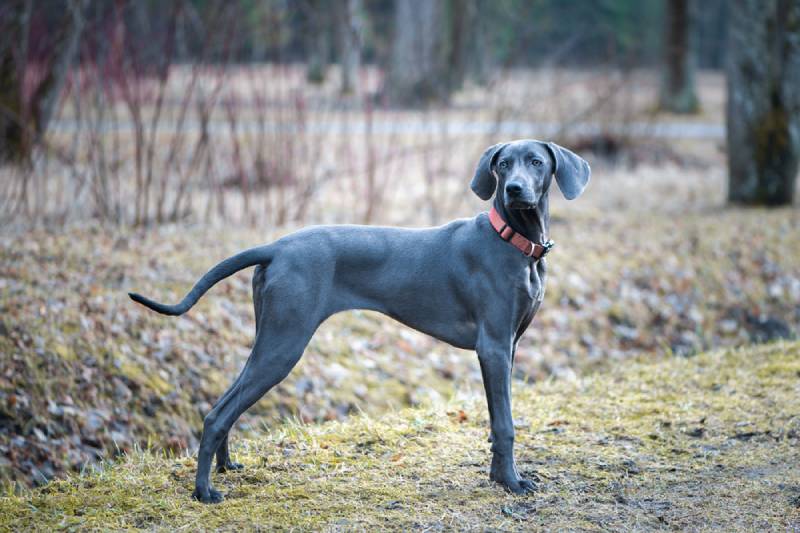Do Dogs Have Object Permanence? Vet Reviewed Facts on Canine Psychology & Cognitive Abilities

Updated on

Dogs can be amazingly intelligent creatures. They can bring wayward sheep back to the yard, lead vision-impaired people through a busy street, and even be trained to perform various tasks like detecting bomb-making materials or simply fetching a ball.
Surprisingly, the studies indicate that dogs have some sense of object permanence and can locate hidden objects even if they are not visible.1 In this article, we will discuss object permanence in dogs, why some dogs don’t have this sense and tests for the sense. Read on to learn more.
Object Permanence in Dogs
Object permanence is the ability to understand that a physical object continues to exist even if it is out of sight. This is a major milestone in development, especially in human infants, because it helps indicate their cognitive ability and development.
Several researchers have carried out the tests in dogs, and their findings indicate that canines also have some sense of object permanence to some level. These human companions are known to reach a level of object permanence that allows them to detect food, even after it has been rotated at a 90 degrees angle or hidden under two cups.
This simply means that dogs can understand that things are still there even after they are removed from their line of sight.

Comparing Dog Object Permanence
As much as the object permanence test is mostly done on human infants, dogs don’t have the same object permanence as us. In fact, researchers have found that the level of object permanence in dogs is similar to that of a child only between 1 and 2 years old.
Dogs can’t understand complex concepts of this cognitive ability, and this includes invisible displacements. This means that dogs might not be able to detect objects if they are hidden in more than one container placed at the end of a beam rotated at 180 degrees.
Moreover, this ability is not as developed in dogs as it is in magpies, primates, and crows. In fact, crows have one of the most developed senses of object permanence, usually equated in the same category as humans.
Do Some Dogs Lack Object Permanence?
Dogs have a lower level of object permanence compared to other animals. This can be attributed to the fact that canines have a more advanced sense of smell that helps them detect hidden items more easily. Therefore, they might not be as motivated as other animals to search for hidden things.
Moreover, each dog might have varying levels of object permanence depending on their age, training, and breed. More research is needed to understand the variability of object permanence in different dog breeds.
How Can You Test for a Dog Object Permanence
To gauge the level of object permanence in canines, most researchers use the invisible displacement task. This task basically involves hiding an object, usually a dog toy, in one or two containers, then rotating the identification beam.
If the dog has a good sense of object permanence, it should be able to remember the exact location of the hidden item and look for it in the correct container even though it might have been switched. On the other hand, dogs with a significantly low object permanence level will not be able to find an item hidden away from their view.
This procedure is usually done several times with different variations so as to confirm the initial results and prove that the dog’s behavior is not because of chance, luck, or any other factors. In a nutshell, the invisible displacement task is the most effective and widely used method of gauging a dog’s object permanence.

Benefits of Object Permanence in Dogs
Even though dogs’ object permanence might sound boring, dryly academic, or just another psychological jargon for common sense, it plays a vital role in a dog’s life.
For starters, since dogs depend on humans for virtually everything in their lives, if this ability is not developed through interactive games and socialization, the dog is very likely to suffer from learned helplessness.
This basically means that a dog may not be able to reason and understand the correlation between cause and effect, especially when living in a household where the owners aren’t always available to help because of their busy lifestyles.
Object permanence is also crucial to a dog’s development of spatial operations, mental representation of the world around them, as well as the creation of an identity. If a dog lacks these abilities, it is more than likely to suffer from excessive fear, heightened confusion, aggression in new environments, and even separation anxiety.
Conclusion
Dogs are very intelligent creatures, capable of understanding various cognitive abilities. However, in terms of object permanence, research shows that dogs are somewhat lacking in this regard. In fact, most dog owners equate a dog’s objective performance to that of a young child.
However, while dogs might not exactly detect hidden objects as much as humans do, they might still have an idea of where the object was placed. This can be attributed to the fact that their object permanence level might allow them to perceive environmental changes over both short and long durations.
This trait might make dogs highly adaptable to different surroundings as well as responding to environmental changes.
- See Also: 8 Best Invisible Dog Fences
Featured Image Credit: Orawan Pattarawimonchai, Shutterstock











